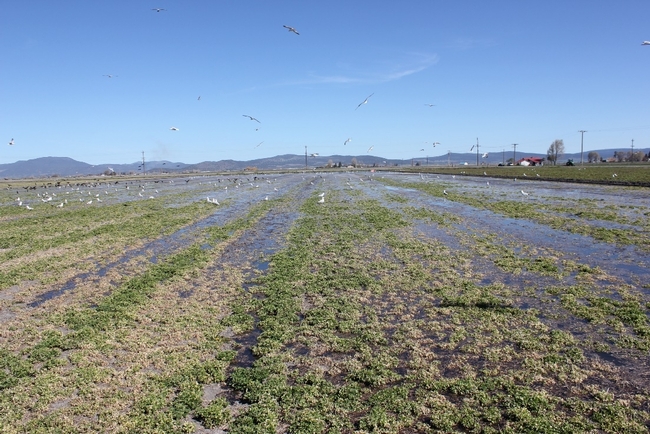
The newly available studies are as follows:
- There are two new cost and return studies for establishing or reestablishing and producing irrigated pasture in the Sacramento Valley. The studies focus primarily on establishment and production costs in the counties of Butte, Colusa, Glenn, Nevada, Placer, Shasta, Sutter, Tehama, Trinity and Yuba. The two separate studies list estimated production costs for establishing and producing irrigated pasture for hay and grazing. The major differences between the two companion studies are establishment and reestablishment of the pasture under two separate scenarios. One covers tilled and no-till planting methods and the other is for pasture production for high intensity grazing and for harvesting hay.
- The third new study outlines cost and returns for producing alfalfa under flood irrigation in the Sacramento and northern San Joaquin valleys. This study focuses on the counties of Butte, Colusa, Glenn, Sacramento, San Joaquin, Sutter and Yolo. This study can be compared to the 2014 cost and return study, “Sample Costs to Establish and Produce Alfalfa Hay in The Sacramento Valley and Northern Delta Using Sub-Surface Drip Irrigation (SDI)-2014.”
- A study is available for establishing and producing winegrapes in the Central Region of the Sierra Nevada foothills. This study focuses on the establishment and the first five years production costs of red wine varieties on bilateral cordon vineyards in the Central Sierra Nevada Foothill Region counties of Amador, Calaveras, El Dorado and Tuolumne. The majority of the production operations are performed by a vineyard management company.
- A cost study is complete for producing field corn for grain in the southern San Joaquin Valley. The study focuses on the production costs in the southern San Joaquin Valley counties of Kern, Kings and Tulare. The study is based on furrow irrigation and uses Roundup Ready-GMO seed.
Each analysis is based upon a hypothetical farm operation using practices common to the region. Input and reviews were provided by growers, farm advisors and other agricultural associates. Assumptions used to identify current costs for individual crops, material inputs, cash and non-cash overhead are described. A ranging analysis table shows profits over a range of prices and yields. Other tables show the monthly cash costs, the costs and returns per acre, hourly equipment costs, and the whole farm annual equipment, investment and business overhead costs.
These new study titles are:
- “Sample Costs to Establish or Reestablish and Produce Pasture in the Sacramento Valley-2015”,
- “Sample Costs to Produce Pasture in the Sacramento Valley-2015”,
- “Sample Costs to Establish and Produce Alfalfa Hay Using Flood Irrigation in the Sacramento Valley and San Joaquin Valley, North-2015”,
- “Sample Costs to Establish and Produce Wine Grapes in the Sierra Nevada foothills-2015”,
- “Sample Costs to Produce Field Corn in the San Joaquin Valley, South-2015”
These and other sample cost of production studies for many commodities are available and can be downloaded from the UC Davis Department of Agriculture and Resource Economics website, http://coststudies.ucdavis.edu. Many earlier, archived studies are also available on the website, http://coststudies.ucdavis.edu/archived.php
For additional information or an explanation of the calculations used in the studies call UC ANR Cooperative Extension specialist Karen Klonsky, who is based at the Department of Agricultural & Resource Economics at UC Davis, (530) 752-3589, klonsky@primal.ucdavis.edu or call Don Stewart, (530) 752-4651, destewart@ucdavis.edu, Kabir Tumber, (530) 752-5489, kptumber@primal.ucdavis.edu.
An initiative to enhance competitive and sustainable food systems is part of UC Agriculture and Natural Resources Strategic Vision 2025.